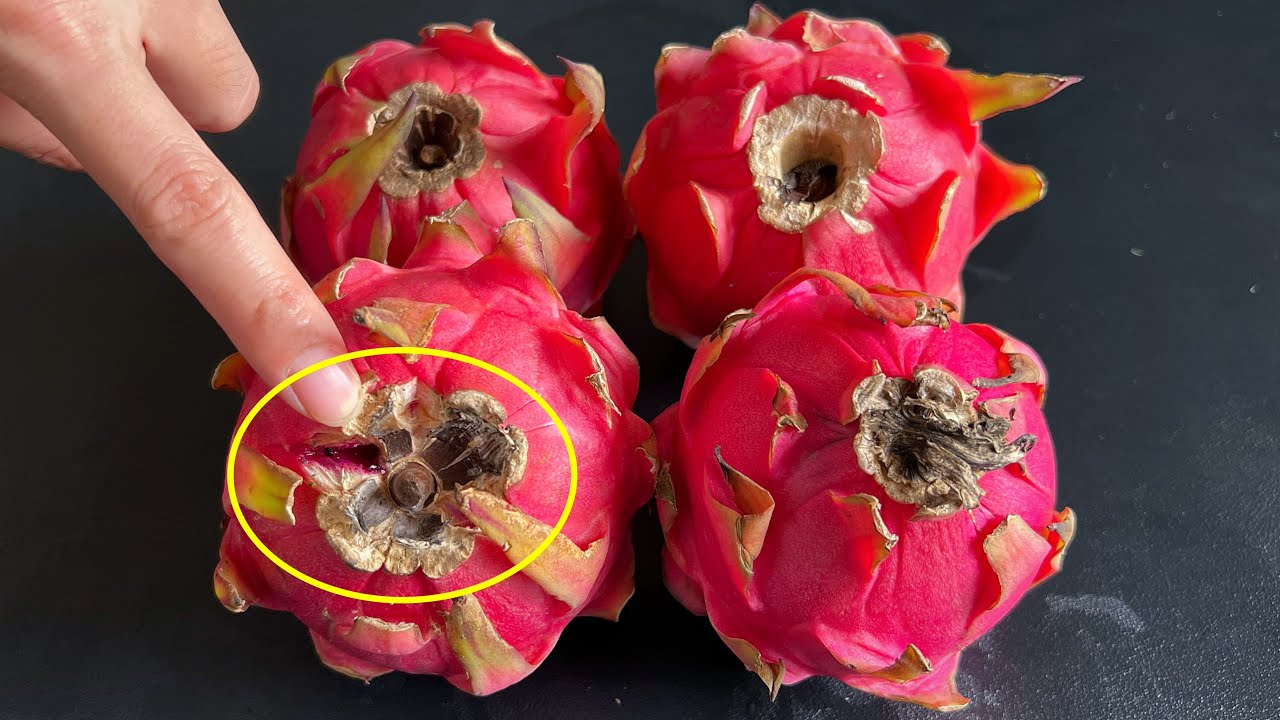
Dragon fruit, also known as pitaya, is a vibrant and exotic fruit known for its unique look and nutrient-rich profile. However, not all dragon fruits are created equal. When shopping for this tropical delicacy, smart shoppers know to turn around and leave when they encounter certain types of dragon fruit. Here are five kinds of dragon fruit to avoid to ensure you get the freshest, tastiest, and most nutritious options.
1. Overly Soft or Mushy Dragon Fruit
While dragon fruit should be slightly soft, if it feels mushy or overly malleable under gentle pressure, it may be overripe. Overripe dragon fruit can have a fermented taste and its nutrients may be diminished. A few soft spots are typically okay, but if the entire fruit feels like this, it’s best to pass.
2. Dry, Brown-Tipped Scales
The vibrant scales or “wings” on a dragon fruit are a good indicator of its freshness. If these scales look dry, brittle, or brown, the fruit is likely past its prime. Fresh dragon fruit scales should look bright, colorful, and healthy. Dry scales often indicate that the fruit has been stored for too long or improperly.
3. Visible Bruises or Dark Spots
Dragon fruits that have visible bruises, dark spots, or blemishes may have undergone rough handling or be starting to rot. These imperfections can affect the texture and flavor of the fruit, potentially leading to a less enjoyable eating experience.
4. An Unpleasant Smell
Fresh dragon fruit has a subtly sweet smell, not unlike other tropical fruits. If a dragon fruit emits a sour or unpleasant odor, it could be a sign that it has begun to ferment or rot. A foul-smelling dragon fruit should definitely be avoided as its quality and taste will likely be compromised.
5. Hollow Sound When Tapped
A lesser-known trick is to gently tap the dragon fruit. A ripe, good quality dragon fruit will have a slightly dull sound when tapped because of its dense flesh. A hollow sound can indicate that the interior is drying out and the fruit may not be juicy or flavorful.
Tips for Choosing the Best Dragon Fruit
-
Color Vibrancy: Look for bright, even-colored skin. A uniform color without a lot of blemishes usually indicates good quality.
-
Firmness: The fruit should be firm but give slightly under pressure, similar to a ripe avocado.
-
Check the Stem: If the stem looks shriveled and dry, it’s likely that the dragon fruit has been off the vine for too long.
Conclusion
Choosing the right dragon fruit can enhance your culinary experience and provide maximum nutritional benefits. By knowing which types of dragon fruit to avoid, you can select the freshest and most delicious fruit available. Remember these tips the next time you’re in the produce aisle for a smart and informed shopping experience.




